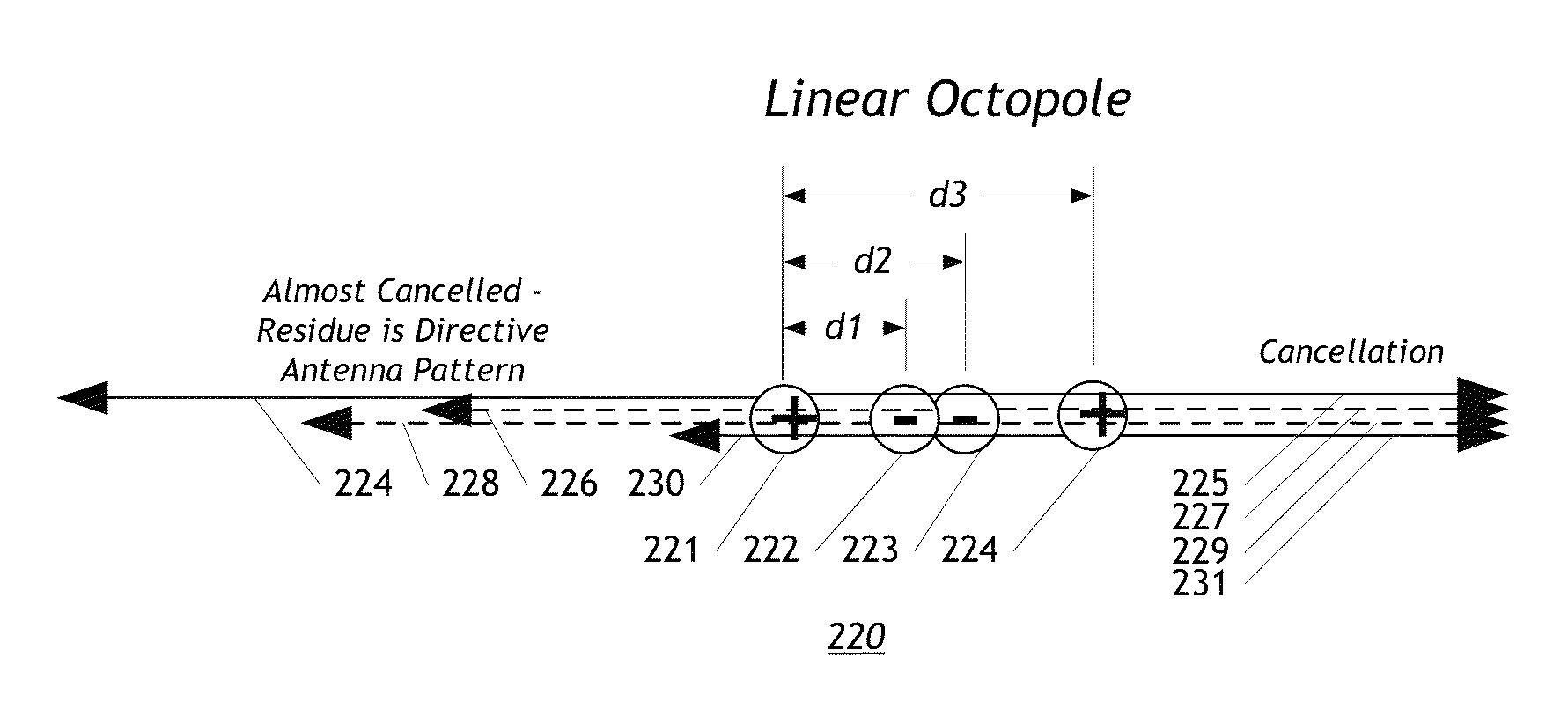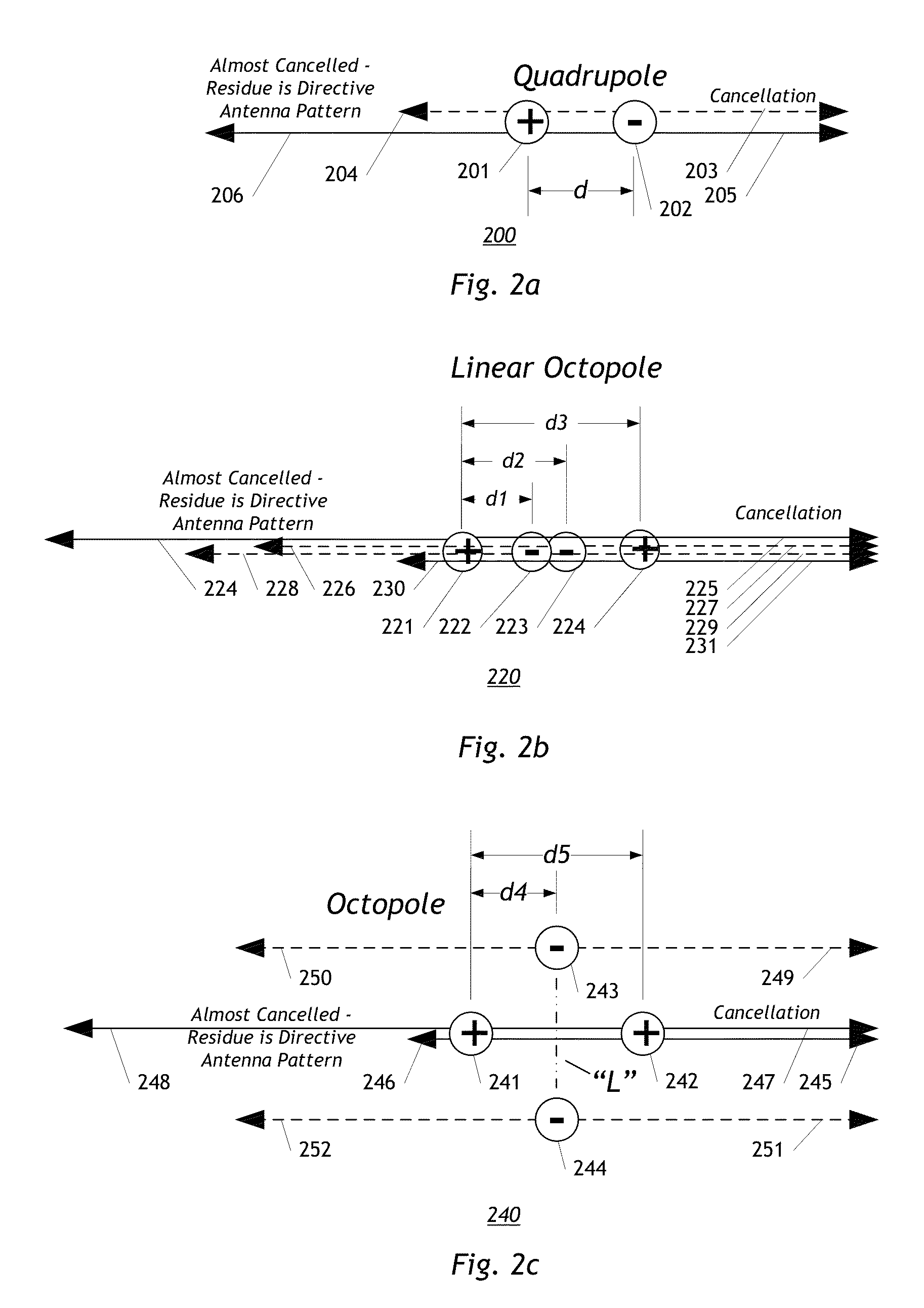Directive, electrically-small UWB antenna system and method
a technology of directive and small uwb antennas, applied in the direction of individual energised antenna arrays, antennas, electrical equipment, etc., can solve the problems of less stable antennas, impractical hand-held devices, and prohibitively large quarter-wavelength antennas for certain applications, so as to avoid resonance tyranny, improve efficiency, and improve efficiency
- Summary
- Abstract
- Description
- Claims
- Application Information
AI Technical Summary
Benefits of technology
Problems solved by technology
Method used
Image
Examples
Embodiment Construction
4.1 Overview of the Invention
[0033]The present invention relates to directive, electrically small antennas and related systems and processes. This disclosure will now describe the present invention more fully in detail with respect to the accompanying drawings, in which the preferred embodiments of the invention are shown. This invention should not, however, be construed as limited to the embodiments set forth herein; rather, they are provided so that this disclosure will be thorough and complete and will fully convey the scope of the invention to those skilled in the antenna arts. Like numbers refer to like elements throughout.
4.2 Directive, Electrically Small Antenna Synthesis
[0034]An ideal square antenna aperture with side of length in wavelength Lλ has directivity D=4πLλ2 and half power beamwidths of 50.8° / Lλ [John D. Kraus, Antennas (3rd ed.), (New York, McGraw-Hill, 2001), p. 147]. Thus, obtaining high directivity usually requires a multiple wavelength dimension aperture—impra...
PUM
 Login to View More
Login to View More Abstract
Description
Claims
Application Information
 Login to View More
Login to View More - R&D
- Intellectual Property
- Life Sciences
- Materials
- Tech Scout
- Unparalleled Data Quality
- Higher Quality Content
- 60% Fewer Hallucinations
Browse by: Latest US Patents, China's latest patents, Technical Efficacy Thesaurus, Application Domain, Technology Topic, Popular Technical Reports.
© 2025 PatSnap. All rights reserved.Legal|Privacy policy|Modern Slavery Act Transparency Statement|Sitemap|About US| Contact US: help@patsnap.com



